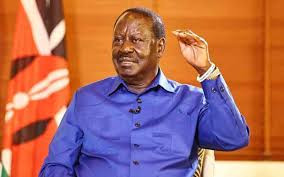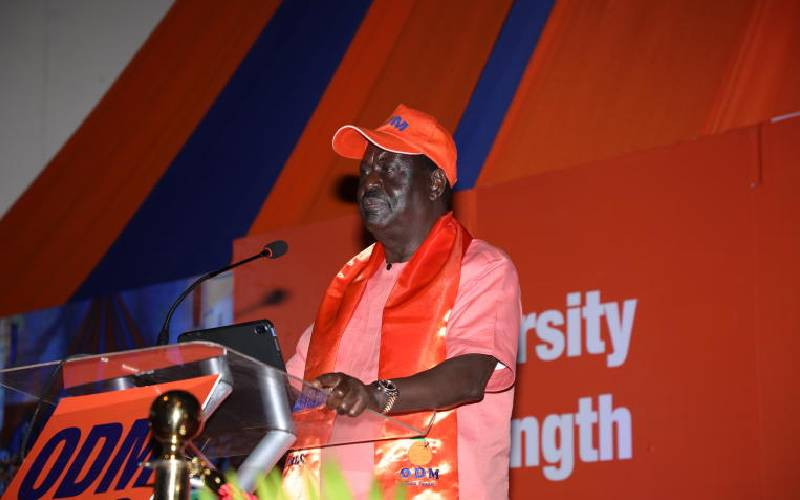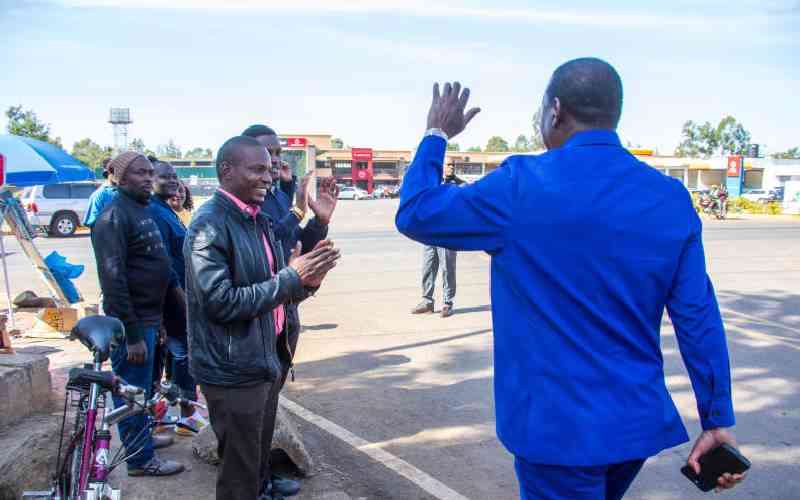By Ally Jamah and Wahome Thuku
Nairobi, Kenya: Judicial staff kicked off rigorous scrutiny of crucial forms submitted by electoral officials countrywide at the Kenyatta International Conference Centre as Prime Minister Raila Odinga lost key applications at Supreme Court.
Raila and his Coalition for Reforms and Democracy failed to clinch the court’s orders for forensic audit of Independent Electoral and Boundaries Commission (IEBC) IT system in a bid to unearth if there were electronic manipulation of the March 4 election results.
The PM also suffered another setback when the court rejected an 839-page affidavit filed in his petition, raising new allegations of electoral irregularities. The court ruled that the affidavit had irregularly been filed without permission of the court and contrary to the rules of engagement.
Supreme Court Judge Justice Philip Tunoi, who read the ruling on the affidavits on behalf of his colleagues, dismissed the ‘late’ affidavits with costs during the pre-trial conference. In total the court rejected seven of Raila’s affidavits over technicalities related to the time of filing and how they were filed.
Tunoi said parties have a duty to ensure they comply with respective timelines and not waste time for the court and other parties to the petitions. Also before the same court a bid by a civil society group Katiba Watch led by Prof Yash pal Ghai had its application seeking to be enjoined in the case thrown out.
But even as the Supreme Court was ruling on the applications by the PM, judicial clerks were still re-tallying votes from 22 polling stations.
Also at the same venue other judicial staff were engaged in scrutinising Forms 34 and 36 from all the 290 constituencies as well as from the Diaspora as ordered by the court. Form 34 bears the results from polling stations while Form 36 is an aggregate of Form 34s at the constituency level.
The painstaking effort aims at verifying if there were any inconsistencies between the number of registered voters per polling area and the tallies signed and forwarded to the National Tallying Centre by respective Returning Officers countrywide.
Registered voters
The scrutiny involving records returned by the presiding officers in all the 33,400 polling stations went on simultaneously with that of fresh tallying of votes in the 22 constituencies CORD suspects the number of people IEBC reported to have voted may have exceeded the registered voters in that particular station.
Last evening, the President of the Supreme Court, Justice Willy Mutunga, who is leading the six-judge-bench, toured KICC to assess the fresh verification process the judges ordered on Monday.
The judges, who have been engaging lawyers on preliminary arguments, will begin the serious business of adjudicating the issues touching on the presidential elections this morning.
They will hear the main petition filed by Raila challenging the IEBC’s declaration of Mr Uhuru Kenyatta as President-elect on March 9, for the next two days after which they are expected to deliver their historic ruling latest Saturday.
The PM had applied to have a forensic audit of all the Information Technology (IT) equipment and electronic facilities used by the commission. He had applied for an order to have IEBC compelled to produce all the equipment and information on its equipment, including computer servers, to have the court conduct the audit.
Stay informed. Subscribe to our newsletter
But in a ruling read out by Justice Ibrahim Mohammed, the bench said that owing to the strict time limits the court has to hear and dispose of the case, it would not be possible to have a thorough audit of the IT system. The application was filed on March 19, four days after the filing of the petition.
“What the applicant seeks at this time in the day is the production of what amounts to the complete IT infrastructure of IEBC. We are not persuaded that such an order as is sought by the applicant can be fully complied with before the hearing of petition set to commence on 27th of March,” he said
He added: “Indeed, if the petitioner had filed the application at the time of filing the petition and proceeded to serve the same upon the same respondents, it would have been possible for the court to issue appropriate orders during the first mention of the petitions. The time for service, filing, hearing and determination of the petition is indeed limited.”
Presidential petition
Justice Ibrahim indicated that the court could not grant the orders sought without seriously jeopardising the hearing of the main petition.
He reminded the legal teams that all the petitions were to be heard and concluded within a strict and rigid time frame decreed by the Constitution, saying the timelines were constitutional and not negotiable.
Although the applicant said that what was sought would be produced in a very short time, the body of the petition indicates a different thing. “The intention of the framers of the Constitution must have been to hasten the determination of the presidential petition given the high stakes involved and the great public interest that would ensure from such petition,’’ the judge went on.
“The law obliges the court of law to administer justice without undue regard to procedural technicalities at the expense of substantive justice. But in this matter, our insistence on the constitutionally-decreed timelines do not amount to undue regard to procedural technicalities,” he added.
Justice Ibrahim further went on: “Ideally, an intending petitioner must utilise the seven-day window afforded by the Constitution following the declaration of results to fully prepare his or her pleadings. Likewise, the respondent must utilise the three days afforded by the rules to mount a comprehensive response to all the allegations made in the petition,”
But other lawyers who opposed Raila’s application argued the order sought would require the production of the entire IT infrastructure of IEBC, which they termed a “monumental undertaking impossible to effected within 24 hours” and that it was just a fishing exercise for information through the backdoor.
They also argued that it had come too late during the Pre-trial conference, which is essentially meant to prepare for the actual hearing of the petition. They added that if the order were granted, it would derail the fair hearing of the trial.
Provide proof
But the PM’s lawyers led by George Oraro insisted the application was an integral part of the petition since it sought information that was critical to the case since it would provide critical answers as to why the IT system failed on Election Day. They also argued that the information would have provided proof that the system was “designed to fail from the start”
They added that the information requested was not as monumental as implied by the opponents. They argued that the information was easily available from the central servers.
 The Standard Group Plc is a
multi-media organization with investments in media platforms spanning newspaper
print operations, television, radio broadcasting, digital and online services. The
Standard Group is recognized as a leading multi-media house in Kenya with a key
influence in matters of national and international interest.
The Standard Group Plc is a
multi-media organization with investments in media platforms spanning newspaper
print operations, television, radio broadcasting, digital and online services. The
Standard Group is recognized as a leading multi-media house in Kenya with a key
influence in matters of national and international interest.
 The Standard Group Plc is a
multi-media organization with investments in media platforms spanning newspaper
print operations, television, radio broadcasting, digital and online services. The
Standard Group is recognized as a leading multi-media house in Kenya with a key
influence in matters of national and international interest.
The Standard Group Plc is a
multi-media organization with investments in media platforms spanning newspaper
print operations, television, radio broadcasting, digital and online services. The
Standard Group is recognized as a leading multi-media house in Kenya with a key
influence in matters of national and international interest.








